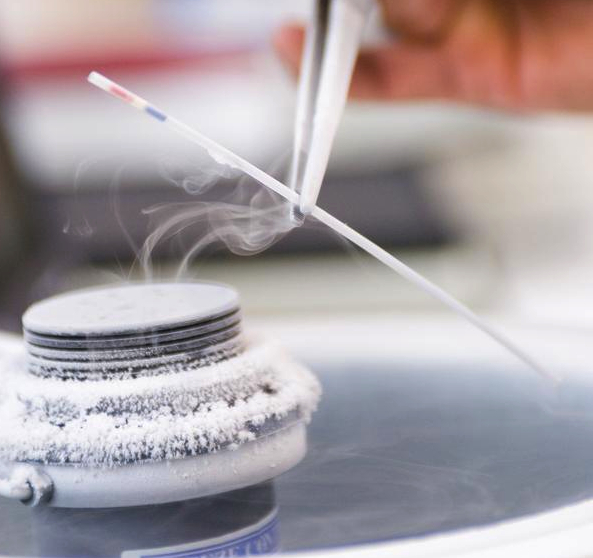Infertility is consistently listed as one of the most distressing long-term side effects of cancer treatment for adolescents and young adults. Yet, the leading National Cancer Institute-designated comprehensive cancer centers—which should be leaders in fertility preservation—may not adequately help patients protect their fertility.
Tag: fertility preservation
New Procedures Help Pediatric Cancer Patients With Future Fertility
With survival rates rising, more kids with cancer are undergoing fertility-preservation procedures.
AMA Urges Insurers to Cover Fertility Preservation
If insurers cover costs for reconstruction after a cancer patient has a mastectomy and costs for storing blood in case a cancer patient needs a subsequent transfusion, why shouldn’t they cover expenses for fertility preservation when a young cancer patient requests it?
ASCO Guidelines for Fertility Preservation Affirm Oocyte Preservation
Guidelines for fertility preservation in newly diagnosed cancer patients have been updated to include oocyte preservation as a standard practice rather than an experimental option, according to the American Society of Clinical Oncology.
Fertility Preservation for Cancer Patients: Demographic Disparities in Counseling and Financial Concerns Are Barriers to Utilization
Several teams of researchers will present new survey data covering the use of fertility preservation for cancer patients at the Sixty-Eighth Annual Meeting of the American Society for Reproductive Medicine.
Lowell Ku, M.D. discusses fertility preservation
Fertility preservation is a form of reproductive medicine which has proven to be life altering for cancer patients as well as other individuals, both men and women, who need to postpone parenthood for a variety of reason. Lowell T. …
Fertility Preservation Talks are More Direct for Men than for Women
Whereas sperm banking was viewed as a routine part of oncology care for men, few women were afforded the opportunity to discuss their fertility options at cancer diagnosis, according to the findings of a small study.
After receiving a diagnosis of cancer, 16 men and 18 women aged 17 to 49 years were interviewed soon after their first consultation with a cancer-focused health professional. Topics discussed included the patient’s perceptions and understanding of the diagnosis; prognosis and future reproductive choices; perceived quality and source of information received, communication, and support; and the roles of partners, family members, friends, and health care professionals.
In addition, 15 health care professionals were asked for their opinions on the information given to younger people with cancer, their knowledge and views of the treatments available with respect to fertility preservation, and their perceptions of patients’ priorities.
Nonprofits help cancer survivors with fertility preservation
At 31 years old, Alice Crisci was diagnosed with breast cancer.
The Redondo Beach resident bared it all in a photo shoot with the Daily Breeze back in 2008 before undergoing a double mastectomy.
The photos were a celebration of her body before cancer would change it forever. The newspaper continued to follow her journey, including her decision to ensure that after remission she’d have a chance at realizing her dream of becoming a mother.
“I learned very early on in the process that my fertility would be at risk, that there was a 50/50 chance I’d be left infertile,” says Crisci, now 35. “And that was a chance I wasn’t willing to take.”
So Crisci went through fertility preservation, a process that cost her $20,000 and had to be paid in full that day. Not qualifying for financial assistance, she charged the entire amount on her American Express card.
Scientists to Apply for License to Fertilize Human Eggs Grown in Laboratory
Scottish scientists are set to revolutionise fertility treatment following the development of a new technique that could lead to a reversal of the menopause in older women.
About the Fertility Clock
The Fertility Clock was developed by Dr. John Jain and Brigitte Mueller as an educational element for the film “My Future Baby: Breakthroughs In Modern Fertility”.
The Fertility Clock provides a simple graphic that can be used to estimate the monthly chance of having a baby.
Age-related decline in natural fertility is due to both decreases in egg count and egg quality; egg quality refers to an egg’s ability to create a chromosomally normal embryo.
As seen in the Fertility Clock, monthly birth rates remain relatively stable through age 35 despite a 90% drop in overall egg counts. Thereafter, birth rates decline more rapidly probably as a result of waning egg quality.
The data used to create the Fertility Clock was taken from landmark works in the fields of Population Research and Developmental Biology.
Using data from historical populations (1) and the most comprehensive study of ovarian reserve to date (2), estimates for monthly birth rates and egg counts were plotted in an age-dependent manner, from birth to menopause.
The rates depicted on the Fertility Clock estimate the experience for most women. As with all biological systems exceptions do exist.
(1) Wallace WH, Kelsey TW. Human ovarian reserve from Conception to the Menopause. PLoS One. 2010 Jan 27;5(1):e8772.
(2) Bongaarts, J. and Potter, R.G. (1983). Fertility, Biology, and Behavior: An analysis of the proximate determinants. New York, NY: Academic Press, Inc.
